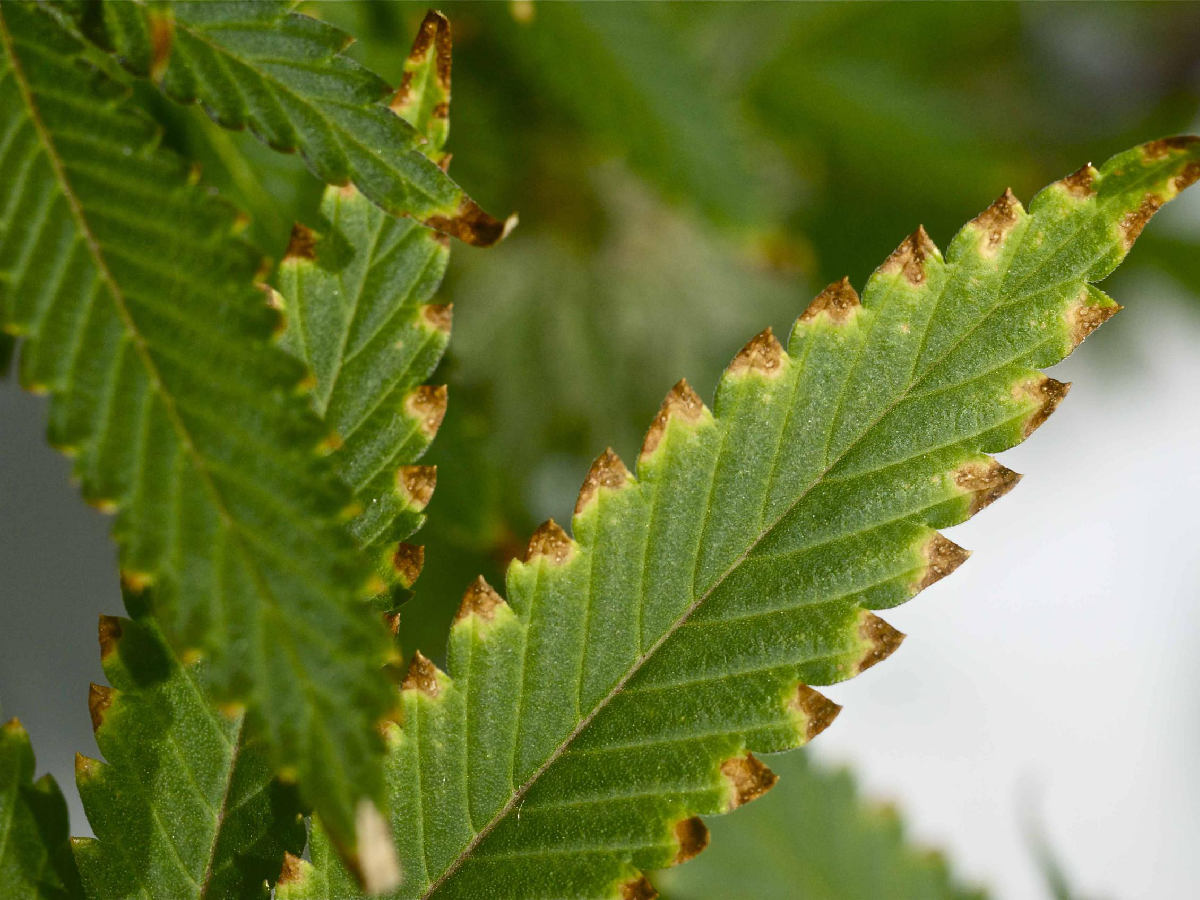In this series of articles, Growers Network talks about a few of the most common Cannabis conditions you need to watch out for. Today’s topic: Nutrient Burn.

The following is an article produced by a contributing author. Growers Network does not endorse nor evaluate the claims of our contributors, nor do they influence our editorial process. We thank our contributors for their time and effort so we can continue our exclusive Growers Spotlight service.
Plant conditions can be a major headache in any grow operation and Cannabis has no shortage of them. So for today’s condition profile we’re going to discuss nutrient burn, a condition you may find yourself dealing with in your grow if your nutrients aren’t adjusted properly.
Quick Look
- Common Name: Nutrient Burn
- Scientific Name: Nutrient Toxicity
- Symptoms: Leaves with “burn” marks on them, despite no fire.
- Caused by: Excessive nutrients
- Timing: Any time
Nutrient Burn
What is it?
Nutrient toxicity is the result of an excess of nutrients in your soil or medium. There could be an overabundance of either your macronutrients or micronutrients.

What to look for
Nutrient toxicity can present in many different ways, depending on which nutrient is in excess. The most common appearance, and thus the common name of nutrient “burn,” is because leaf tips will start to appear like they’ve been singed, with orange, brown, or black tips.

However, burned tips are not the only symptom of nutrient toxicity. Other symptoms can include:
- Unusually dark green leaves
- Leaf death
- Damaged or underdeveloped roots
- Malformed flowers
- Brown spots
- Chlorosis/blotchy leaves
- Necrosis
How to Treat/Prevent
Hydroponic Systems
In hydroponic grows, you will want to check your pH first to make sure that it’s not out of normal range (5.5 to 6.5 pH, or slightly acidic). Many nutrient issues are caused by pH being out of alignment.
Assuming your pH is fine, flush your nutrients out of your system and start with a fresh set of balanced nutrients. In theory you could also dilute the nutrients by adding more water, but then you could theoretically run into deficiencies in other nutrients.
Finally, make sure to check that your feed schedule is in line with what your plants need. Depending on their strain and what part of their growth they are in, they made need different nutrients. Make sure that your feed schedule aligns with the plant’s needs.
Soil
In soil, remediating toxicity is little bit more difficult. You will need to add more water and fewer nutrients to dilute the excess nutrition. Monitor carefully for signs of any nutrient deficiency during this process, and correct should any signs of deficiency appear. Once new leaves appear to be returning to a healthy state, stop diluting and return to a balanced feeding schedule.
To prevent this from happening, make sure you aren’t fertilizing your soil when you don’t need to. It’s better to under-fertilize in soil than it is to over-fertilize. You can always add fertilizer to soil -- it’s much harder to take it away.
However, it’s not the end of the world for soil -- beneficial microbes can help regulate nutrient toxicities and deficiencies. Consider incoulating your soil with beneficial microbes to help reduce risks.
One Other Thing
Nutrient toxicity can cascade into other problems. Excessive nutrients could disrupt the natural microbial makeup in your systems, so make sure to inoculate with beneficial microbes after correcting the nutrient excess. Additionally, make sure to keep a close eye out for pests during your adjustment period!
So now you know a bit about nutrient burn and what you can do to prevent it from ruining your grow. Have additional questions about nutrient burn? You should join our forum where you can post pics and ask our expert community about this topic or any other!
Happy Growing!
10 Best Gift Ideas for Cannabis Connoisseurs and Growing Aficionados (2022)
December 7, 2022Developing and Optimizing a Cannabis Cultivation System
December 14, 2021Dealing with Insomnia: How Can CBD Help?
December 10, 2020Your Guide to Sleep and CBD
December 7, 2020
Do you want to receive the next Grower's Spotlight as soon as it's available? Sign up below!
Resources:
- Want to learn more about subjects similar to those touched upon in this article? Check out our articles on subjects such as:

Do you have any questions or comments?

About the Author
Hunter Wilson is a community builder with Growers Network. He graduated from the University of Arizona in 2011 with a Masters in Teaching and in 2007 with a Bachelors in Biology.